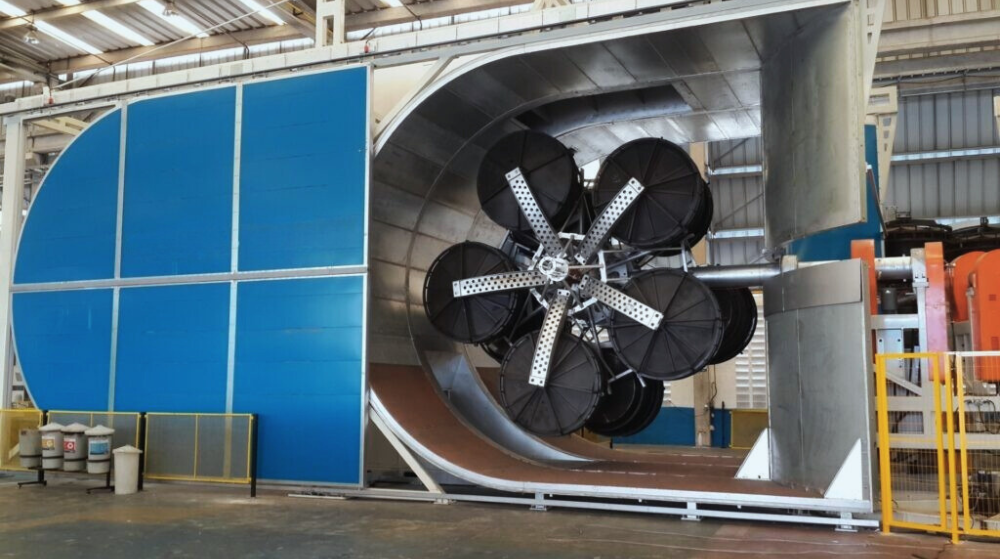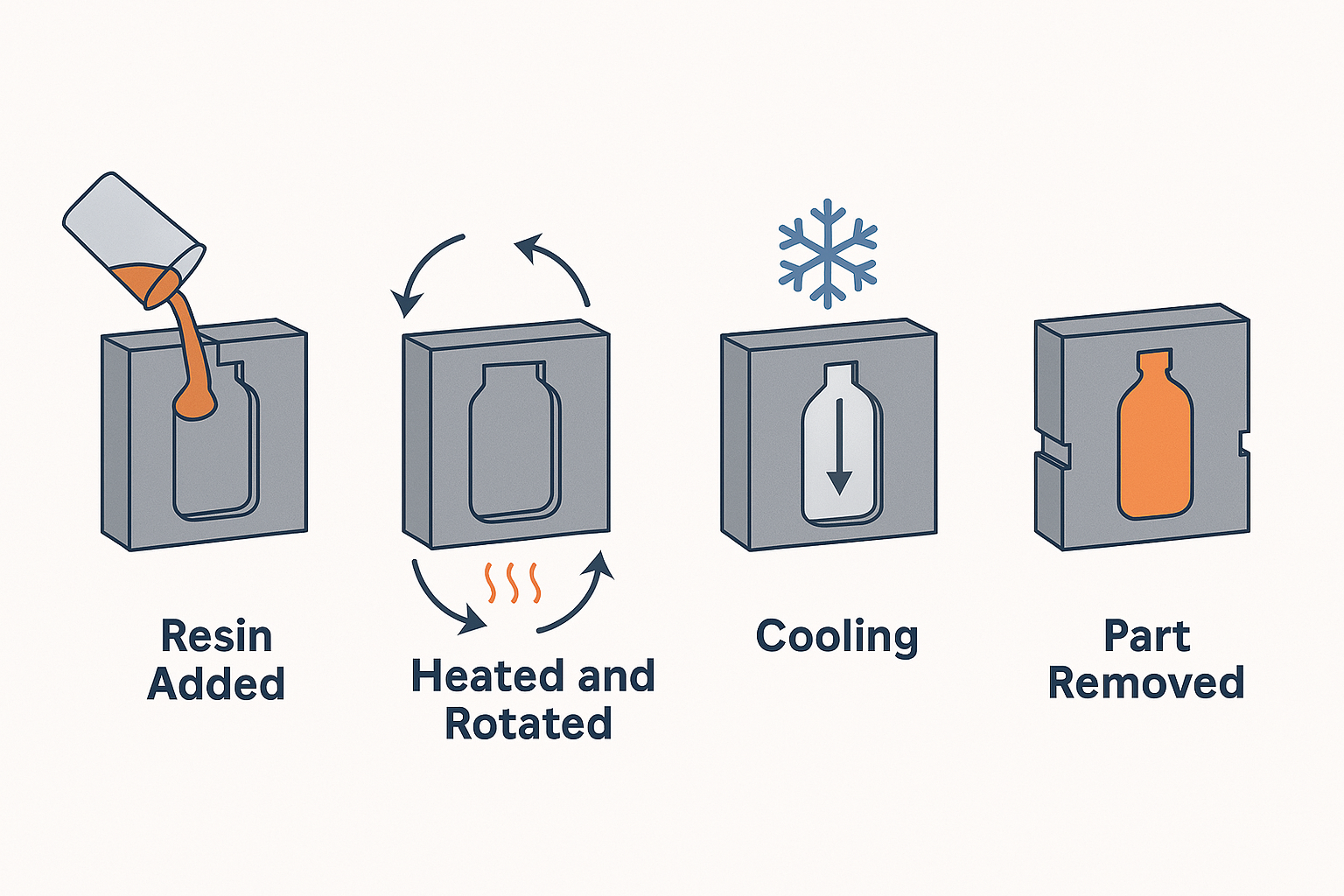ROTATIONAL MOLDING
Rotomolding (Rotational Molding) is a plastic manufacturing process used to create hollow, seamless products. It involves placing a powdered thermoplastic resin into a hollow mold, which is then heated and rotated slowly along two perpendicular axes. As the mold rotates, the plastic melts and coats the interior surfaces evenly. It is ideal for large, durable parts with uniform wall thickness.
Advantages of Rotomolding
-
Low tooling cost compared to injection/blow molding
- Uniform wall thickness: Especially good for large, hollow parts with consistent strength.
-
Durability: Produces seamless, stress-free parts with high impact resistance.
-
Part customization: Easy to vary wall thickness, colors, or integrate logos and graphics.
-
Cost-effective for short runs: Lower mold costs make it ideal for low- to medium-volume production.


Key Steps of Rotomolding:
Key Steps of Rotomolding:
- Loading: Plastic resin (usually in powder form) is placed into a hollow metal mold.
- Heating & Rotating: The mold is heated in an oven while rotating biaxially. The resin melts and coats the inside surface of the mold.
- Cooling: The mold continues to rotate as it cools, solidifying the plastic evenly.
- Unloading: The mold is opened, and the finished hollow part is removed.
Decision Drivers
Decision Drivers
- Production Volume: Rotomolding is low- to medium-volume friendly. Use if you plan to produce fewer units (100s- 10,000s).
- Part Geometry: Best for large, hollow, seamless, or double-walled parts (e.g., tanks, bins, coolers).
- Tooling Costs & Lead Time: Faster and cheaper mold development than injection or blow molding.
- Material Compatibility: Limited to thermoplastics that can withstand slow, high-temperature cycling.
- Secondary Assembly: Rotomolded parts often require secondary operations (trimming, inserts, assembly).
 CONSIDER
CONSIDER